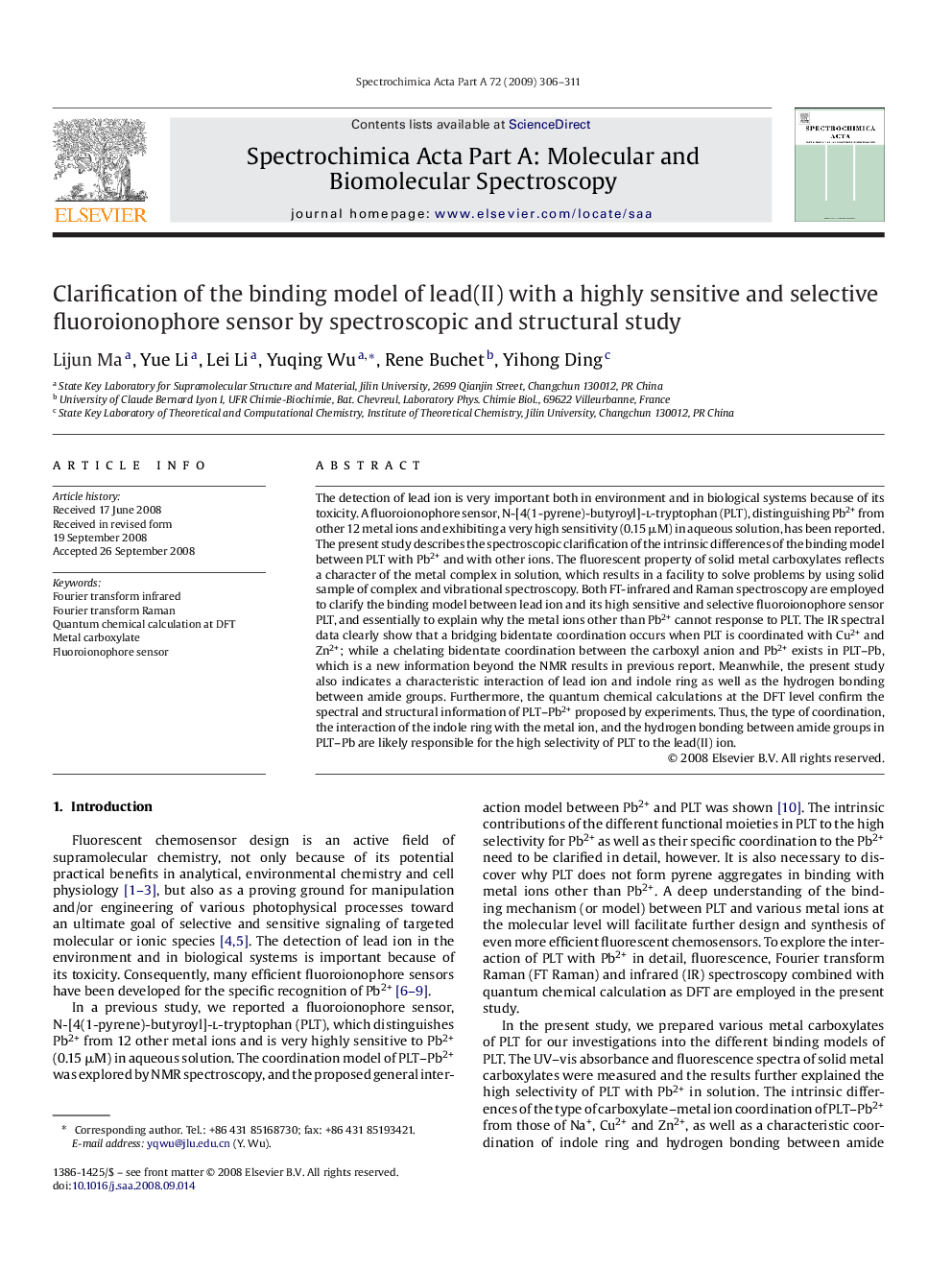| کد مقاله | کد نشریه | سال انتشار | مقاله انگلیسی | نسخه تمام متن |
|---|---|---|---|---|
| 1233632 | 968812 | 2009 | 6 صفحه PDF | دانلود رایگان |

The detection of lead ion is very important both in environment and in biological systems because of its toxicity. A fluoroionophore sensor, N-[4(1-pyrene)-butyroyl]-l-tryptophan (PLT), distinguishing Pb2+ from other 12 metal ions and exhibiting a very high sensitivity (0.15 μM) in aqueous solution, has been reported. The present study describes the spectroscopic clarification of the intrinsic differences of the binding model between PLT with Pb2+ and with other ions. The fluorescent property of solid metal carboxylates reflects a character of the metal complex in solution, which results in a facility to solve problems by using solid sample of complex and vibrational spectroscopy. Both FT-infrared and Raman spectroscopy are employed to clarify the binding model between lead ion and its high sensitive and selective fluoroionophore sensor PLT, and essentially to explain why the metal ions other than Pb2+ cannot response to PLT. The IR spectral data clearly show that a bridging bidentate coordination occurs when PLT is coordinated with Cu2+ and Zn2+; while a chelating bidentate coordination between the carboxyl anion and Pb2+ exists in PLT–Pb, which is a new information beyond the NMR results in previous report. Meanwhile, the present study also indicates a characteristic interaction of lead ion and indole ring as well as the hydrogen bonding between amide groups. Furthermore, the quantum chemical calculations at the DFT level confirm the spectral and structural information of PLT–Pb2+ proposed by experiments. Thus, the type of coordination, the interaction of the indole ring with the metal ion, and the hydrogen bonding between amide groups in PLT–Pb are likely responsible for the high selectivity of PLT to the lead(II) ion.
Journal: Spectrochimica Acta Part A: Molecular and Biomolecular Spectroscopy - Volume 72, Issue 2, March 2009, Pages 306–311